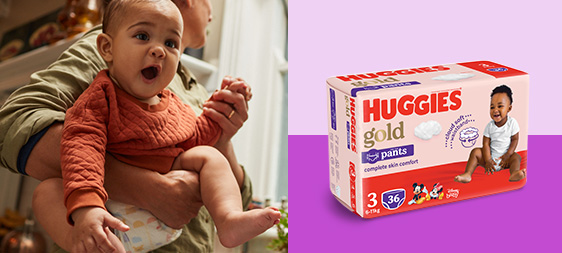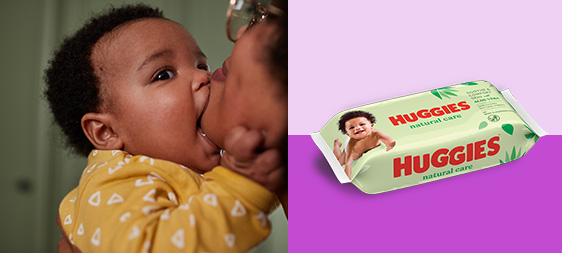Chickenpox is a common disease during childhood, but adults can also get it. It tends to be more severe in adults who run a higher risk of developing complications than children.
In South Africa the first vaccine to prevent chickenpox was launched in 2001. Since vaccination against it became routine there have been fewer cases of chickenpox throughout our communities. Chickenpox can be highly contagious to people who haven’t been vaccinated or never had it before. If you have been vaccinated and you do get infected, your symptoms will be milder.
Having a case of chickenpox used to be seen as a marker for childhood, a sort of badge of honour that we had passed some sort of juvenile milestone. In fact, before vaccination became routine, Moms used to host “chickenpox parties” where children who have not had the disease yet were invited to come and share the contagion risk with the infected child. Luckily times have changed.
The vaccination schedule for South Africa recommends that you vaccinate your baby against chickenpox at 9 months and again at age 6. Also, children, adolescents and adults who fall in risk groups could benefit from being vaccinated.
What exactly is chickenpox?
Chickenpox is a disease caused by the Varicella Zoster virus. It causes an itchy blister-like rash – that is impossible not to try and scratch!. Usually it takes around five to ten days for the blisters to dry and fall off.
If you have not been vaccinated or never had it before, you can get this disease at any time of your life. Some people develop a bad case of chickenpox and become quite ill. Others don’t seem to get it so intensely and it’s not such a problem.
Who are at the most at risk of having complications from chickenpox?
The people most at risk include:
Newborns and infants whose mothers have never had chickenpox or had never been vaccinated against it.
Those who are immunosuppressed (i.e. their bodies cannot fight off the infection), because of illness or medication, e.g. people being treated for cancer and having chemotherapy, or those suffering from HIV/AIDS. Complications for these people include pneumonia and encephalitis (inflammation of the brain).
Pregnant women who haven’t had chickenpox. Infection during pregnancy can lead to malformations of the foetus and other complications.
Those who are not immune to chickenpox. There are two ways to develop immunity to the disease, either by having chickenpox previously so the body has built an active resistance to it or, by being immunised against it. Once someone has had chickenpox they are unlikely to have it again and if they do, it won’t be as severe as the first time.
How is chickenpox spread?
Chickenpox is transmitted through direct contact with the rash or blisters and by the droplets spread into the air via sneezing and coughing. The fluid contained in the blisters and mucous of the infected person is very contagious and if this comes into contact with your mouth, or you breathe it in, transmission of the disease is likely. That is why it is important to wash your hands after touching the blisters and to throw away all used tissues. Another mode of transmission, is sharing mucous and saliva – so no kissing allowed.
It is also possible for children to develop chickenpox after they have been in contact with a person who has shingles. (See below for shingles information).
Chickenpox is at its most contagious, from 1 or 2 days before the rash appears at the time when flu-like symptoms appear. You will remain contagious until all the blisters have formed scabs and are dry and crusted over. This generally takes about 5-10 days from when the rash first appeared.
To reduce the spread of chickenpox
Children who go to child or day care, crèche or school, need to stay away from when the rash first appears until all the lesions have dried up and crusted over. Also if you are infected, it is best to stay at home until the spots have crusted over.
Be extremely careful about hygiene practices. Wash your hands after touching the infected person. Avoid sharing cups, eating utensils, towels, bed linen and clothing with the infected person.
Wash bedding and anything which comes into contact with the infected person.
Dispose of used tissues as the virus can spread through sneezing, coughing and mucous/saliva.
Be a responsible adult, avoid going near crowds, pregnant women, young children, people who are not immune or those who are immunesuppressant, e.g. undergoing chemotherapy.
Incubation period of chickenpox
It takes around 10-21 days from when you were exposed to the chickenpox virus until the rash appears. In this time, you will generally feel fine until towards the end of the incubation period (1-2 days before the rash starts) when you may start to feel tired, run down and generally unwell as if you have the flu. If you suspect your child has been exposed to someone with chickenpox and they are generally not feeling well, take them to your doctor or clinic sister. [CDC, NHS]
What are the symptoms of chickenpox?
The symptoms of chickenpox come in two stages:
The initial symptoms are similar to those for the flu – high fever (over 38 degrees Celcius), tiredness, loss of appetite and headaches – making it understandable that chickenpox can be passed off as another illness By the time your rash appears you may have been infected for a while and you could be spreading the disease around already.
The next stage is when the tell-tale rash appears (small red spots). It quickly turns into clear fluid-filled blisters on the face, chest and back before spreading to the rest of the body. Chickenpox blisters are not fussy about where on the body they develop. In the ears, on the genitals around the eyes and nostrils – there is really nowhere on the skin which is immune to their - even the scalp can be affected and some people are unable to even comb their hair for the week or so that they have chickenpox.
These blisters are incredibly itchy and it can become almost impossible not to scratch them. It might help to clip your childs fingernails to avoid them scratching themselves. If you scratch and then burst the blisters, it can be painful and can lead to the lesions becoming infected, increasing the likelihood of scarring.
Chickenpox could last from anything between 5-10 days because as some of the blisters turn into crusts and dry out, new ones can develop. Don’t worry, it usually takes about a week for the blisters to become scabs and once they fall off you know the worst is over.
What can I do to prevent my child getting chickenpox?
The best way to avoid getting chickenpox is to get vaccinated against it.
There is a very effective vaccine available to prevent children from getting chickenpox. It is recommended that you vaccinate your baby at 9 months, and to take them for their second vaccine at age 6. If your child has not been immunised yet – speak to your clinic sister, doctor or health professional about this vaccine.
A single dose (at 9 months) will be 85% effective at preventing any form of chickenpox and will be 100% effective against severe chickenpox. In other words it will still be possible to contract the disease, but it will not be as severe as if the person was not immunised in the first place. By getting a second dose (at age 6) the vaccine proves to be nearly 100% effective against chickenpox and severe chickenpox.
What is the treatment for chickenpox?
There is no specific treatment or cure for chickenpox and the only management is to try and alleviate the symptoms. Because it is caused by a virus, antibiotics are not effective.
Treat their pain: Paracetamol in the recommended dose and frequency can be useful in relieving an elevated temperature and feelings of misery. NEVER use aspirin-containing medication for your child with chickenpox – it has been associated with Reye’s Syndrome (a severe disease affecting the liver and brain, which can lead to death).
Treat their itch: There are a range of lotions and rinses, which can be added to warm baths and to help reduce the itching. These can be very soothing, especially in summer when sweat tends to make skin irritation worse. Use something like chamomile lotion or ask your pharmacist for suitable cooling gels. Keep their fingernails short as scratching may lead to infection and scarring – you could even cover their hands with socks or gloves to prevent them from scratching in their sleep.
Keep them hydrated: Give them plenty of water to keep them hydrated. Ice lollies might help soothe their thirst if their mouths are filled with blisters.
Keep them comfortable: Sweating also aggravates the itchiness, so when they have a fever, it is best to dress them so they don’t become too hot (or too cold). Loose-fitting, cotton or smooth clothes and pajamas are best and will help stop the skin from becoming irritated and sore. Avoid sponging them down with cool water – this will cool them down too much and make them shiver.
What is shingles?
Shingles are caused by the same virus as chickenpox – the varicella-zoster virus. It is possible to get chickenpox from someone with shingles – but it isn’t possible to get shingles from someone who has chickenpox.
Shingles is essentially a resurgence of the chickenpox virus many years later. The virus lies dormant in the nerve endings and if the person’s immune system is not working effectively,or even for no apparent reason, this virus can reactivate and cause shingles. Painful blister-like lesions appear, most commonly on one side of the face or body.
Treatment is with specific anti-viral drugs and with analgesics. Treatment is otherwise similar to that of chickenpox - rest, hydration and mostly - don’t scratch!




























